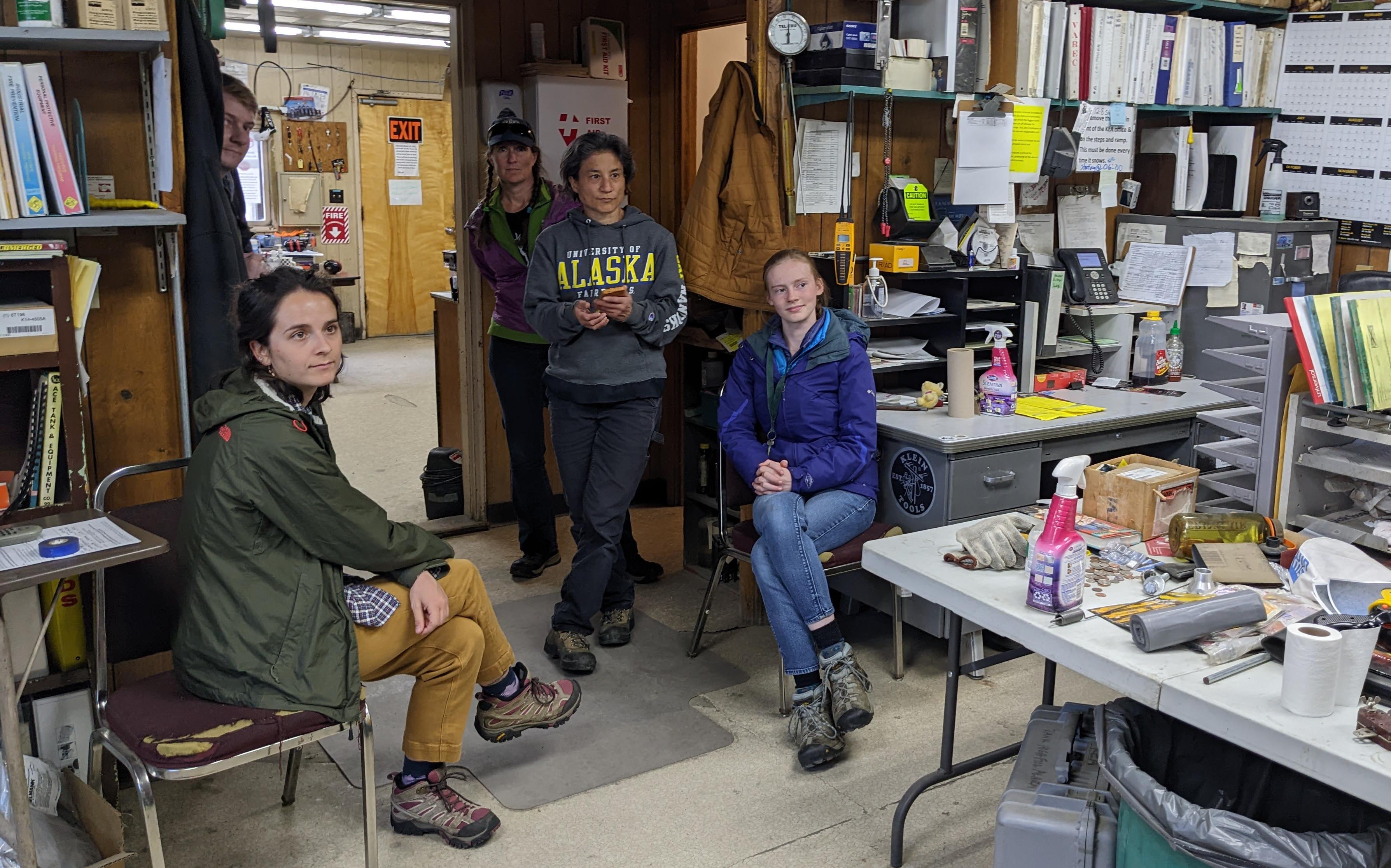Kotzebue Electric Modelling and Energy Audits Ensure Grid Stability and Reliability

A team of six ACEP researchers traveled to Kotzebue last month to collect electrical and building system data to support power system modeling efforts.
The effort is funded by the Department of Energy’s Established Program to Stimulate Competitive Research and the Office of Naval Research’s Alaska Regional Collaboration for Technology Innovation and Commercialization. The grant is titled "Development and validation of models to assess dynamic response of converter-dominated power systems across multiple spatiotemporal scales."
ACEP’s Dayne Broderson, Mariko Shirazi and Andrew Miles, with undergraduate intern Lindy Guernsey and Stanford Shultz Fellow graduate students Cameron Morelli and Sweekar Bengaluru, worked with Kotzebue Electric Association’s Matt Bergan and Rocky Jones to perform simplified energy audits of the KEA power plant as well as all buildings heated by recovered heat from the diesel generators. The energy audits were necessary to identify energy requirements associated with heating the buildings connected to heat recovery loops should the diesel generators be shut off or operated at much lower loads.
Other work included nearly completed mapping of the electric distribution system to now include the single-phase transmission feeders and details of the electric power pole configurations. The team collected protection relay settings, downloaded historic electric generation and distribution data, and characterized the renewable site electrical layout.
This EPSCoR work focuses on developing dynamical models of the Kotzebue electrical power system that can be used to evaluate technologies to ensure the stability of the community grid under various future renewable scenarios. These models simulate time periods of few seconds to few minutes using time steps from tens of microseconds to tens of milliseconds.
Building these models requires detailed knowledge of all electrical components of the power system, including the generators, renewable resources, energy storage, protection system, distribution system and loads.
The ARCTIC work is focusing on techno-economic feasibility studies to identify the economics and fuel savings associated with various renewable energy, energy storage and beneficial electrification options. The models used for these studies, such as HOMER, typically simulate an entire year using hourly time steps. Building these models requires knowing the generator sizes and fuel use curves, renewable energy and energy storage ratings, operating strategies, and one year of load and renewable (wind and solar in Kotzebue) data.
For more information on this work, please contact Mariko Shirazi at mshirazi@alaska.edu.
The ACEP research team in the Kotzebue Electric Association power plant office during their visit. Photo by Dayne Broderson.


